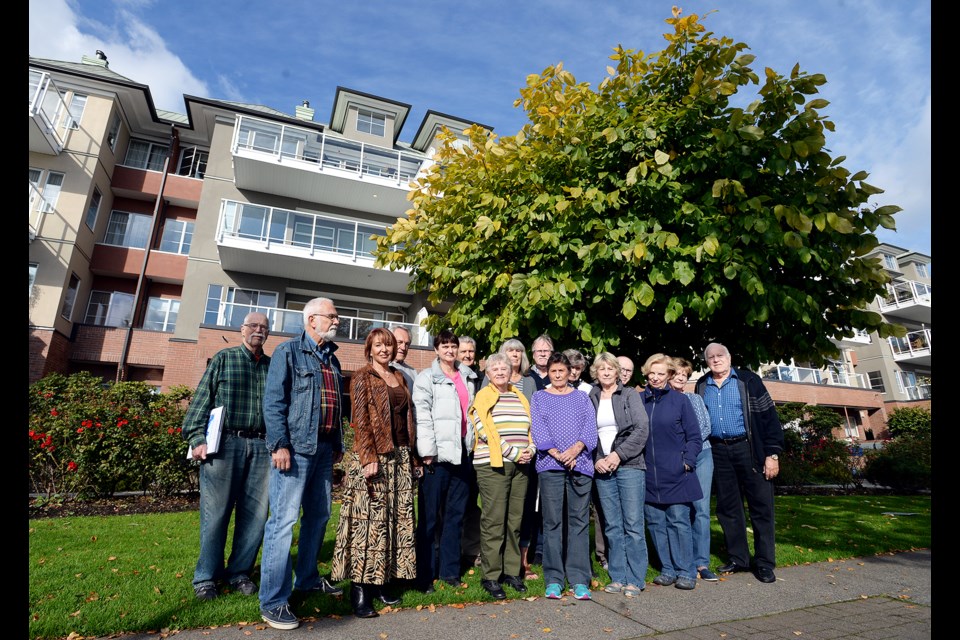Trees along the waterfront esplanade are a growing concern for Dockside residents.
Jim Sinclair appeared before city council on Oct. 3 to express concern on behalf of the building’s strata that five trees planted by the city in 2007 are obliterating some residents’ views and could infringe on their balconies in the coming years.
“If the trees don’t grow another inch, they have already affected far more dramatically than you ever imagined and we ever imagined, the views,” he said. “Let’s be honest. … People pay a premium to have those views.”
Quayside residents and the city first clashed over trees in 2006, when the city proposed to replace 17 linden trees on the esplanade because they had aphids and were large for the area. In their place, the city planned to plant 32 new trees along the north and south sides of the boardwalk.
While the linden trees on the south side of the boardwalk were never removed and continue to grow, five new trees were planted on the north side of the boardwalk in front of Dockside condominium, where none previously existed: two American yellowwood; two paperbark maple; and one black tupelo.
Sinclair said part of the city’s pitch was that it was going to plant more modest, slow-growing trees that wouldn’t interfere with views and would only grow to a height of 20 to 30 feet. Dockside commissioned B.C. Plant Health Care to do a report on the trees and a professional arborist concluded the trees would surpass 30 feet.
“They have grown very large already, after only nine years, and the growth rate we were told was 25 years,” he said.
Sinclair said the American yellowwood was 26 feet tall in the spring and is already closer to 30 feet.
“It is growing rather quickly,” he said. “It’s a very quick-growing tree in many respects. It’s going to grow to be, according to the arborist report, 40 or 50 feet before it’s finished.”
Just as importantly, the tree will grow to be 40 to 50 feet wide, he said, which means some residents won’t have any river views at all.
The arborist has indicated the black tupelo will grow to a minimum of 40 to 50 feet and 20 to 30 feet wide. Another assessment suggested it could be 50 to 60 feet tall, and a third source said 60 to 80 feet tall.
“These are not small trees,” he said. “In fact, they are bigger than the ones you took out.”
Only the paperbark maple comes close to being of the size promised by the city, Sinclair said.
“It’s planted on the two corners,” he said. “It’s still a problem, but you can still see through the trees. The other trees, particularly the American yellowwood, it blocks out light to the apartments. It’s a shade tree. The linden trees you can see through – light comes through, but there’s no light through those trees at all.”
Dockside residents recommend the city remove the American yellowwood and black tupelo trees as they’re far bigger than the city ever envisioned, and retain and prune the paperbark maple. They also recommend that any new trees should not be planted without consultation with Dockside residents and input from an independent tree expert.
Council referred the issue to staff for a report.



